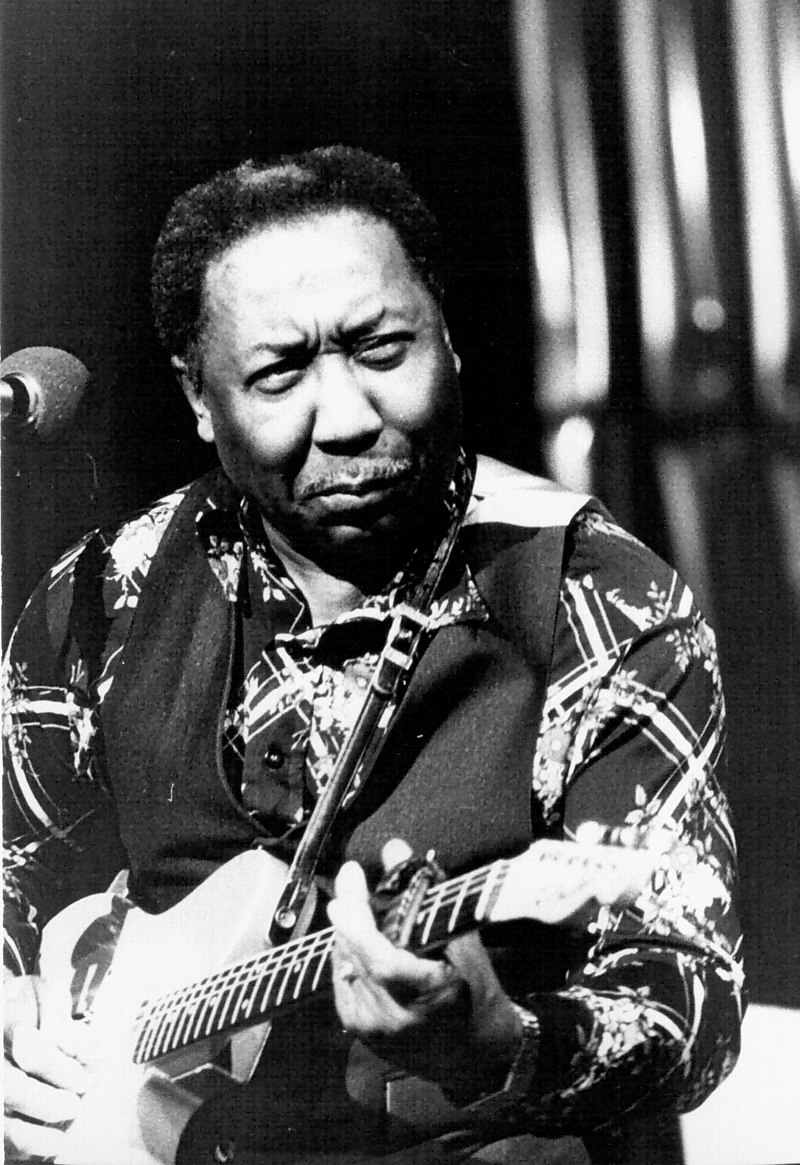**This Muddy Waters stamp is a part of the set from the jazz and blues singers Legends of American Music series. Make sure to check out my hub page for this project.
It is impossible to overstate the importance of Black musicians to American and world music. One reason why the Legends of American Music series by the USPS is so important is because it features so many Black American musicians across genres. For example, this blog has articles about music legends including W.C. Handy, Louis Armstrong, Sister Rosetta Tharpe, and many others.
One of the most important Black musicians in American music was Muddy Waters. A blues singer, songwriter, and guitarist, he was perhaps the most important figure in the post-World War II blues scene. His electric blues sound and electric guitar playing were both highly influential on other blues musicians and the developing style of rock and roll.
Muddy Waters
The place and date of Muddy Waters birth are unknown. He was born sometime between 1913 and 1915, perhaps in Rolling Fork, Mississippi, or nearby Jug’s Corner. His birth name, though, was McKinley Morganfield. Waters’ first musical experience was in church, learning to sing in his families’ Baptist church. By the age of seventeen, he was learning the guitar. He said he paid $2.50 cents for a Stella guitar from the Sears, Roebuck & company.
Waters was able to learn blues in the Delta region by listening to, and emulating, such figures as Son House and Robert Johnson. Waters himself began to play in small bars in the region and on the plantation of Colonel William Howard Stovall. In the 1930s, he went on tour in the Delta region, playing harmonic with Big Joe Williams. Then, in 1941, Alan Lomax came to the region to document blues music for the Library of Congress. He recorded Waters on the Stovall plantation that year.
Chicago
In 1943, Waters went to Chicago to pursue a musical career. He began recording for Columbia Records in 1946, then for Aristocrat Records, and, most importantly, for the new Chess Records. In the 1950s, Waters reached his stride with band that featured Little Walter Jacobs on harmonica, Jimmy Rogers on guitar, Elgin Evans on drums, Willie Dixon on bass, and Otis Spann on piano. Other blues greats such as Howlin’ Wolf would also play in Waters’ band over the years.
The band had big hits in the early 1950s including “Hoochie Coochie Man,” “I Just Want to Make Love to You,” and “I’m Ready.” The band developed the electric, Chicago Blues style, led by Waters’ aggressive electric guitar. They had further hits later in the decade including “Sugar Sweet,” “Trouble No More,” and in 1956, “Got My Mojo Working.”
By the end of the decade, while he was no longer producing hit singles, Waters became a leading blues figure in the world. He toured the United States and the United States and Europe and continued to record. A resurgence in interest in the blues in the 1970s led to the most impressive era of his career, winning multiple Grammy awards for albums between 1972 and 1980. By the early 1980s, Waters was in declining health. His last gig was sitting in with Eric Clapton’s band in 1982. Waters died in April of 1983.

By Lionel Decoster – Own work, CC BY-SA 4.0
Legacy
Muddy Waters was one of the great figures in electric blues, a type of blues driven by the electric amplification of instruments. He is given great credit for developing the Chicago Blues style, driven by his aggressive guitar solos. Waters was especially known for slide playing, creating a sound that would influence later blues and rock and roll musicians.
The influence of Waters on music is unfathomable. Lyrics from a 1950 song were taken by a British rock band to become their name: the Rolling Stones. Eric Clapton was a fan of Waters and his band Cream covered “Rollin’ and Tumblin’.” Other songs were covered by, or inspired songs, by Bob Dylan, Led Zeppelin, the Allman Brothers, and others.
Muddy Waters won six Grammy Awards. Four of his songs songs: “Rollin’ Stone,” “Hoochie Coochi Man,” “Mannish Boy,” and “Got My Mojo Working,” are on the Rock and Roll Hall of Fame’s list of most influential songs. He has also been inducted into the Blues Foundation Hall of Fame (1980), Rock and Roll Hall of Fame (1987), and received the Grammy Lifetime Achievement Award (1992).
The Stamp

The postage stamp of Muddy Waters was the design of Julian Allen. The image on the stamp is a little cartoony, in warm orange and yellow hues, showing a smiling Muddy Waters. He is looking over his right shoulder, wearing one of his trademark broad pattern shirts. A microphone to the right makes it clear that he is on stage. The image comes from a promotional photo taken of Waters for Blue Sky Records. It is one of eight stamps in the Blues and Jazz singers group of the Legends of American Series set. The eight stamps became available on September 17, 1994.
Of course, you really should listen to Muddy Waters performances to understand his greatness. Below is a great example of his live performances:
